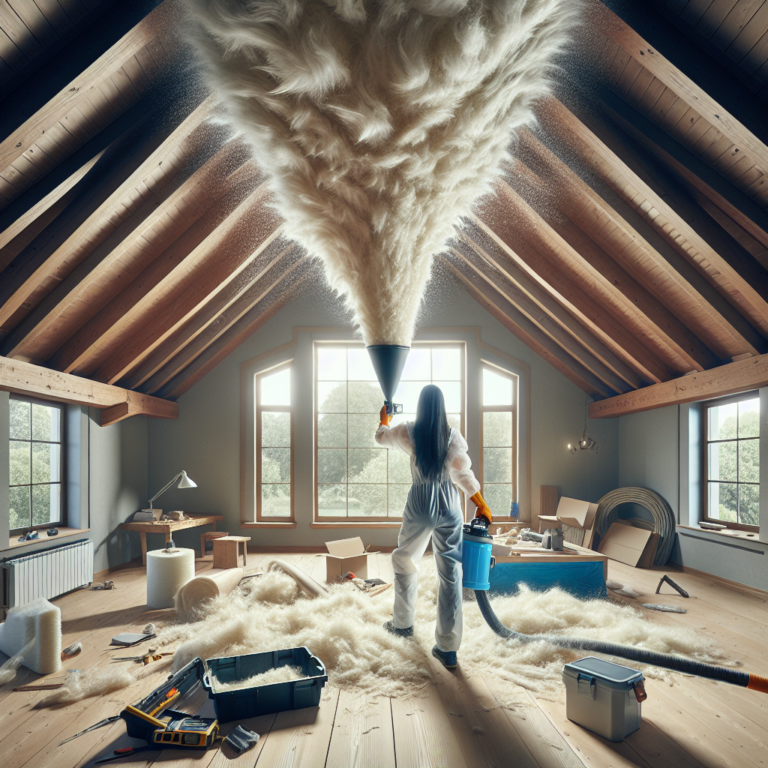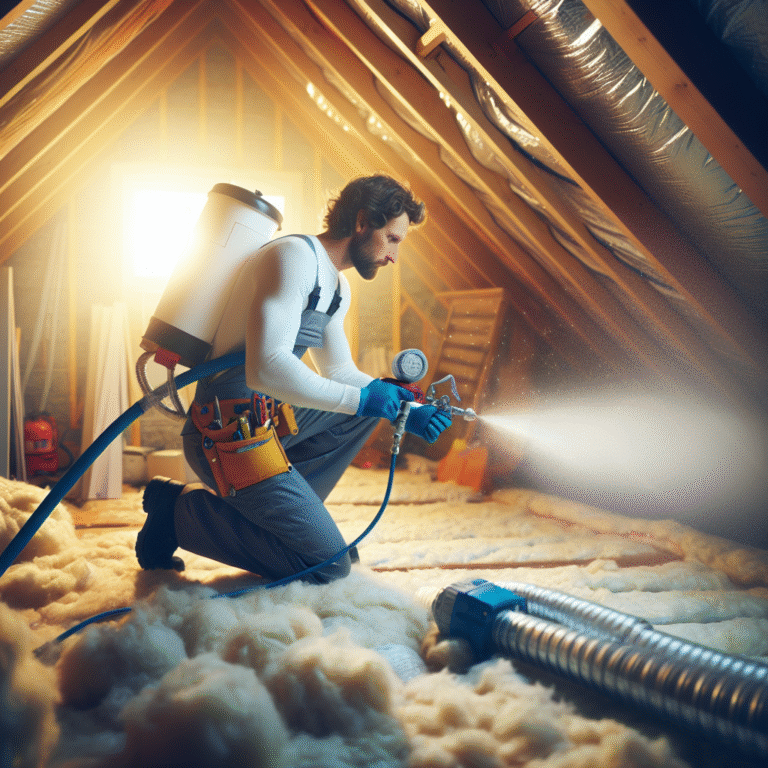Say Goodbye to Drafty Attics: The Power of Blown-In Insulation in Existing Ceilings
Introduction
Cold spots, ice dams and sky-high energy bills don’t have to be part of your winter routine. Blown-in insulation in existing ceilings delivers an affordable, high-performance solution for sealing out drafts and stabilizing indoor temperatures. By filling in cracks and voids that traditional batts miss—and combining with an effective vapor barrier—you’ll lock in comfort, slash heating and cooling costs and protect your attic from moisture damage.
Benefits of Blown-In Insulation in Existing Ceilings
1. Complete Coverage
Loose-fill fiberglass or cellulose perfectly conforms to joist bays, irregular cavities and around wiring or plumbing. Unlike batts that leave gaps when cut to fit, blown-in insulation in existing ceilings eliminates cold bridges and ensures every nook is filled.
2. Superior R-Value per Inch
With an R-value of 3.2–3.8 per inch, blown-in fiberglass often outperforms batt insulation of equal thickness. In tight ceiling cavities, a thinner layer of blown-in material can match—or exceed—the thermal resistance of bulky batts.
3. Rapid, Non-Disruptive Installation
Installers blow insulation through small holes drilled in the ceiling below, avoiding messy renovation or removal of drywall. Your living space stays intact, and most attic projects finish in a single day.
4. Enhanced Soundproofing
The dense, fibrous fill of blown-in insulation in existing ceilings dampens airborne noise, transforming upstairs footsteps, appliance hum and street sounds into a whisper-quiet background.
5. Eco-Friendly Option
Cellulose insulation typically contains up to 85% recycled newspaper fibers, while blown-in fiberglass often includes recycled glass content. Both help reduce landfill waste and lower the carbon footprint of your home.
How to Properly Install Vapor Barrier with Attic Blown-In Insulation
Step 1: Inspect and Prepare
– Remove any old, damaged insulation.
– Seal air leaks around vents, wiring penetrations and attic hatches using caulk or foam.
– Ensure attic ventilation channels (baffles) remain clear to prevent moisture buildup.
Step 2: Lay the Vapor Barrier
– Choose a 6-mil reinforced polyethylene sheet or foil-faced kraft paper.
– Install it on the warm-in-winter side of the ceiling (beneath the joists), overlapping seams by 6–8 inches.
– Secure with corrosion-resistant staples or tape, sealing all edges to create a continuous moisture barrier.
Step 3: Blow in the Insulation
– Feed loose-fill insulation through the blower hose into each cavity, working systematically across the attic.
– Monitor depth regularly—12–16 inches is standard for most climates—to meet recommended R-values.
– Have a helper in the attic guide the hose for even distribution around obstacles.
Step 4: Seal and Finish
– After filling, seal the small access holes with plywood patches or drywall.
– Re-secure or weatherstrip the attic hatch.
– Clean up stray insulation to prevent settling into living spaces.
Common Mistakes to Avoid When Installing Blown-In Insulation in Existing Ceilings
• Skipping the Vapor Barrier
Omitting a proper vapor barrier risks trapping moisture in the insulation, leading to mold growth and structural rot. Always install on the warm side.
• Using Faced Batts Under Blown-In Insulation
Paper-faced batts can tear during the blowing process, compromising the moisture seal. Remove old faced batts or cover them with unfaced barrier material first.
• Neglecting Air Sealing
Insulation alone cannot stop convective air leaks. Seal gaps around penetrations, top plates and recessed lighting before adding blown-in fill.
• Uneven Coverage
Insulation depths that vary by more than an inch leave weak spots in your thermal envelope. Use marked depth poles or automatic depth controls on the blower to maintain uniformity.
• Overlooking Ventilation
Blocking soffit vents with insulation can cause condensation in the roof deck. Always install baffles to preserve airflow from eaves to ridge vents.
FAQs
Q: Can blown-in insulation be added over existing insulation?
A: Yes—provided the old layer is dry, mold-free and properly sealed. Always check total depth and adjust to meet current R-value codes.
Q: How long does attic blown-in insulation last?
A: High-quality fiberglass and cellulose can maintain performance for 20–30 years if moisture is controlled and seal integrity is preserved.
Q: Will blown-in insulation settle over time?
A: Cellulose may settle 10–20% over years. Installers often add extra depth to compensate. Fiberglass tends to settle much less.
Conclusion
Blown-in insulation in existing ceilings is a fast, cost-effective way to banish drafts, reduce utility bills and protect your home against moisture damage. Pairing it with a continuous vapor barrier attic blown-in insulation system ensures you lock out winter’s chill and summer’s heat while safeguarding structural components from condensation. Say goodbye to drafty attics and hello to year-round comfort—your thermostat (and wallet) will thank you.




